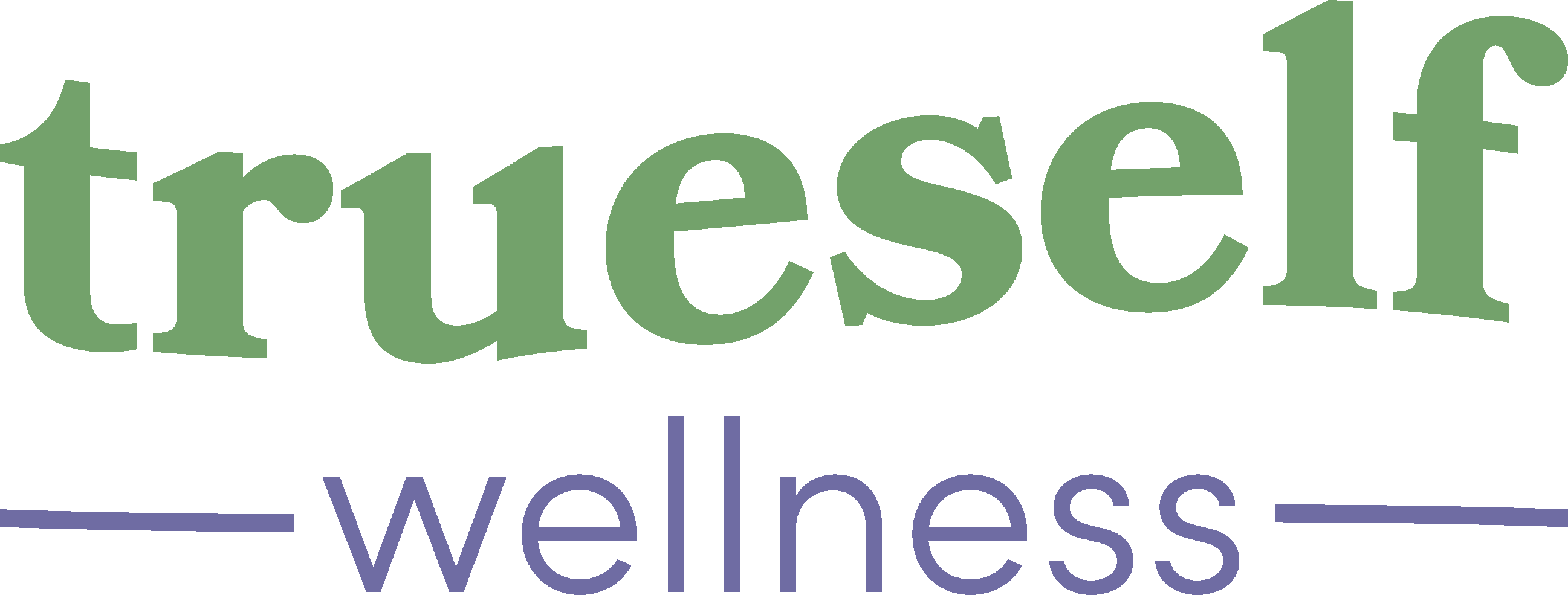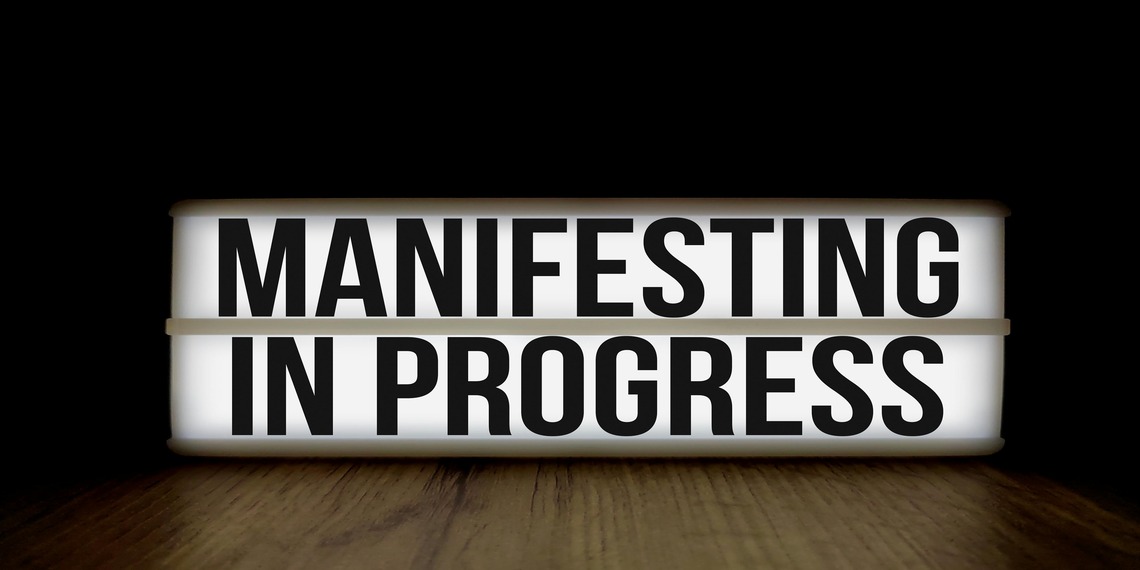I manifested this job. I manifested this house. I’m manifesting a better world.
Have you ever heard someone say something like that and wondered what on Earth they were talking about? Or perhaps you yourself are an expert manifestor—someone who is well-versed in the process of magically bringing your desired outcomes into being through the power of your intentions alone. In a sense, unless we’re literally living with no actual vision of the future at all (which is totally fine, by the way—it’s a strange time), we are all manifestors, dreaming better possibilities into being.
The Webster Dictionary defines manifestation as “one of the forms that something has when it appears or occurs.” In more New Age contexts, manifestation generally refers to the act of bringing something into being through the power of thought. “To manifest (verb) something is to bring something forth into your physical life experience by using your thoughts, feelings, or belief,” writes manifestation coach Kelsey Aida.
While this may sound like an impossible concept, manifestation is deeply rooted in human history and psychology; in fact, you’ve probably done it yourself.
Origins of Manifestation: As Above, So Below
Manifestation has been referred to by many names, but it consistently appears throughout history, popping up wherever people decided to try to use their mental fortitude to outsmart life’s seeming randomness.
An early text that discussed manifestation is the Kybalion, an ancient Egyptian text written by a sage named Hermes (hence the fact that it is referred to as a Hermetic Text). In it, Hermes proposed seven sacred rules that are the basis of modern manifestation tactics.
“Everything in the entire universe, whether physical, intellectual, spiritual or emotional, is part of an all-encompassing divine creation,” he argued, proposing the existence of a giant energy field that surrounds us wherever we are—a field that many have called God. Hermes simply called it The All.
Hermes is also responsible for the phrase, “As above, so below … as below, so above,” a deeply complex sentiment that—in one interpretation—means that whatever happens in the higher worlds or spiritual worlds also happens in the human worlds, and vice versa. In essence, we have the ability to influence the spiritual plane even while here in our human forms.
“Everything in the universe is composed of matter which vibrates at a certain rate; and matter is just a physical form of energy,” Hermes proposed—a sentiment that has since been backed up by Einstein and other physicists who argue that the universe is made up of constantly vibrating particles.
This point offers one way of explaining manifestation: Since the universe is constantly vibrating and so are we, we can actually influence the world around us by changing our vibrations and altering our thoughts.
In the Kybalion, Hermes argued that humans have the ability to control energy and to manifest outcomes—first by changing our thoughts and then by taking full responsibility for our lives.
The Law of Attraction and the Rules of Manifestation
Have you ever spotted the book The Secret and wondered…what is the secret, anyway?
Well, you’re about to find out, right here, right now.
In essence, The Secret, also known as the Law of Attraction, is the idea that “like attracts like.” It’s the idea that what we think about grows.
The Secret 2006 Full Movie HD 720p – LAW OF ATTRACTIONwww.youtube.com
The Secret (and the modern self-help books derived from it) are rooted in a 19th century school of thought called the New Thought school. The seeds for this movement were planted when Phineas Quimby, diagnosed with then-incurable tuberculosis early in his life, became convinced that the mind held powers over the body as he attempted to heal himself.
“The trouble is in the mind, for the body is only the house for the mind to dwell in,” he eventually wrote. Quimby’s work laid the foundation for the New Thought movement and for revelations to come.
The term “Law of Attraction” was first written by Russian occult thinker Helena Blavatsky, who used it to write about the relationship between elements of spirit. Eventually, it was picked up by other philosophers, and soon enough books like The Secret and The Master Key System began referring to the concept as a sort of catch-all solution for anyone looking to change their lives.
Napoleon Hill’s famous Think and Grow Rich also centers around a kind of manifestation theory. Hill advises readers to train their subconscious minds, through affirmations and other techniques, to constantly aid their efforts to—as the book promises—grow rich.
The Law of Attraction Explainedwww.youtube.com
Manifestation Today
The most modern iteration of this very old theory can be found in the thriving realm of manifestation training. There are countless step-by-step trainings and courses dedicated to teaching users the art of manifesting anything they long for—a happy life, a sea change, a relationship, enlightenment, a great cup of coffee, or whatever else one is seeking.
Each manifestation teacher offers slightly different variations on similar steps. For example, according to mindvalley.com, the steps to manifestation are:
- Believe in yourself
- Create an action plan
- Take action
- Focus on the positive
- Visualize the life you want
- Stay humble and be grateful
- Upgrade your beliefs (believe that you are worthy)
And manifestation teacher Sylvia Salow says that the 9 steps to manifestation are:
- Have a vision
- Have a strong desire
- Have a clear intention
- Develop an unflappable belief
- Acceptance (accepting that your new belief is true)
- Take an aligned action
- Absolute detachment (relinquishing your goal)
- Support yourself
- Be as clear as a laser beam.
It’s clear that manifestation, even in its most distilled forms, generally relies on the same process: envision, believe, act.
Each one of these steps, of course, involves its own philosophical foundations, tactics, and techniques. From meditation to journaling to actively seeking out conscious communities and beneficial relationships, the steps to actually manifesting your dreams will always look different—but the idea behind manifestation is that belief is the first step to change.
The Science of Manifestation
In some ways, there’s nothing all that “magical” about manifestation. In fact, manifestation may be just another form of the idea that if you want to make something happen, visualize it, make a plan, and take the necessary steps to get there (and believing that you can achieve the thing doesn’t hurt). There is some scientific and psychological backing for various aspects of manifestation. It’s fairly logical to conclude that our perception and our thoughts influence our worlds, and certainly the mind, body, and spirit are more connected than most of us realize.
Of course, most manifestation theory relies on deeper, more metaphysical principles, such as the theory that we’re all part of a vibrating cosmic whole (a theory that is gaining traction as quantum physics develops). Quantum physics has shown us that we are, indeed, made up of vibrating energy (our neurons communicate through bursts of light), and everything in the world is connected.
Does Consciousness Influence Quantum Mechanics?www.youtube.com
Manifestors take this one step further, arguing that our individual selves are merely tiny fragments of a much larger global brain, collective unconscious, cosmic soup, God, or whatever you want to call it. By reconnecting to this global brain or energy (what Hermes would’ve called The All) and by aligning ourselves with its higher vibrations, we can actually change our individual selves and immediate surroundings–according to the theory.
Some manifestation teachers argue that whether or not we’re consciously manifesting, we’re always manifesting something. Walking around asleep and unconscious of our own place in the universe and connection to the grander self will inevitably result in us manifesting isolated lives or a sense of existential confusion. As we broadcast lower vibrations, according to some manifestation teachers, we inevitably influence others and our surroundings. Whether manifestation can actually replace our sense of existential lostness with fulfillment is another question entirely—but it makes sense that believing in a higher power and sense of cosmic unity would provide at least some solace in the midst of life’s chaos.
Critiques of Manifestation
Like every modern self-help technique, manifestation has plenty of issues. For example, many modern manifestation teachers preach the idea that one only has to think of something to see it–ignoring the fact that manifestation also entails taking tangible steps to realize your vision.
Some teachers also emphasize the importance of having a completely positive mindset all the time, which—unfortunately—just isn’t possible or healthy. In addition, manifestation isn’t a cure-all or a guarantee of anything, and often the things certain people are able to “manifest” are actually results of, say, class privilege.
On the other hand, if you do decide to embark on a manifestation journey (and especially if you find that you have a talent for it), it’s important to be careful what you wish for. Some people report having used manifestation techniques to summon things that they didn’t actually want and didn’t know what to do with (one classic example is manifesting your dream lover and realizing you weren’t ready for them at all). Many others use manifestation solely to accumulate material gain, which (spoiler alert) often leaves people unhappier and more full of desire than when they started.
Indeed, there’s an aggressively capitalist vibe to many modern-day manifestation practices and courses, which old Hermes in Egypt most likely did not intend when he began thinking about the connections between the spiritual plane and our world.
However, there are some manifestation practices and courses that operate with frameworks of decolonization, anti-racism, or positive social change. Ultimately, manifestation is a very old tactic that certainly doesn’t belong to anyone or any brand in particular.
Perhaps manifestation is just not for you. The relentless positivity or magical energy of it all might be a turn-off, and that’s fine. But just remember the next time you start a bullet journal, or scroll through apartment listings, or stumble on a random portal, or rant about the need for a better world: You, too, might be a manifestor.











